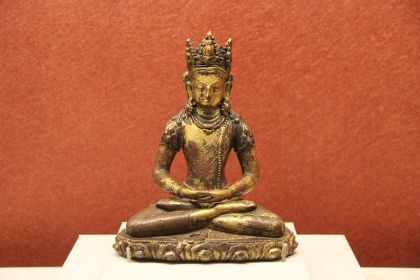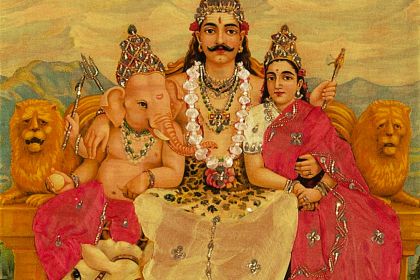MEDITATION
Mantra of Avalokiteshvara: meaning and purpose of popular Buddhist chants

Avalokiteshvara
Music Period: Indian Classical
Piece of Music: Auṃ maṇi padme hūṃ, Namo ratna trayaya
Avalokiteśvara is one of the central figures of Buddhism whose name is often associated with several mantras chanted by practitioners to gain psychological and spiritual powers. In different regions, Avalokiteshvara is described as a male or a female but everywhere they are invariably considered to be the embodiment of the compassion of all Buddhas—a title reserved for those who have awakened and attained nirvana to focus on the mission to rid all living creatures from the suffering and endless chain of rebirths.
The most widespread Buddhist practice is reciting of the six-syllabled Sanskrit mantra Om mani padme hum which first appeared between the 4th and 5th centuries AD in the collection of sutras, a genre of ancient and medieval Indian texts in a form of instructions. In this manuscript, the mantra is seen as a condensed form of all the Buddhist teachings and metaphorically described as the "innermost heart" of Avalokiteshvara.
Like many mantras, Auṃ maṇipadme hūṃ has many interpretations but the essence of practice is proper breathing combined with the pronunciation of a sequence of sounds whose effects lie beyond semantic meaning.
The middle part of the mantra, maṇipadme, can be translated from Sanskrit as "jewel in the lotus" and symbolize purification since the lotus flower is the most known Buddhists symbol that signifies spiritual awakening and has been associated with Buddha in many countries including India, China, Nepal, and Japan. In the mantra, maṇipadme is pronounced between syllables oṃ and hūṃ, both of which have no linguistic meaning but are widely known as divine sounds.
Listen to the mantra Om maṇipadme hum performed by Tibetan Incantations:
The first line of the other famous mantra, Namo ratna trayaya, refers to various aspects of Avalokiteshvara as a bodhisattva, or one who sees the path of Buddha. In the subsequent narrative, the other names of Avalokiteshvara and their metaphorical forms are mixed with semantically meaningless sounds om dara dara diri diri duru duru usually chanted in a chorus manner.
Listen to Mantra of Avalokiteshvara (Namo Ratna Trayaya) performed by Tibetan Incantations:
Here are the lyrics of Tibetan Incantations' version of the Namo ratna trayaya Mantra of Alokitesvara but it should be borne in mind that Buddhist texts vary greatly depending on countries or regions.
Namo Ratna Trayaya,
Namo Arya Jnana
Sagara, Vairochana,
Byuhara Jara Tathagataya,
Arahate, Samyaksam Buddhaya,
Namo Sarwa Tathagate Bhyay,
Arhata Bhyah,
Samyaksam Buddhe Bhyah,
Namo Arya Avalokite
Shoraya Bodhisattvaya,
Maha Sattvaya,
Maha Karunikaya,
Tadyata, Om Dara Dara,
Diri Diri, Duru Duru
Itte We, Itte Chale Chale,
Purachale Purachale,
Kusume Kusuma Wa Re,
Ili Milli, Chiti Jvalam, Apanaye Shoha
In terms of musical harmony, mantras can be performed in a monotonous manner but, in most cases, mantra singers show advanced rhythm and melody based on the musical traditions of a particular country or region. So in India, the chanting of mantras follows the centuries-old traditions of Indian classical music, in China and Tibet mantras are sung mainly in the pentatonic scale, and in the rest of the world, mantras are often performed in the major scale.



